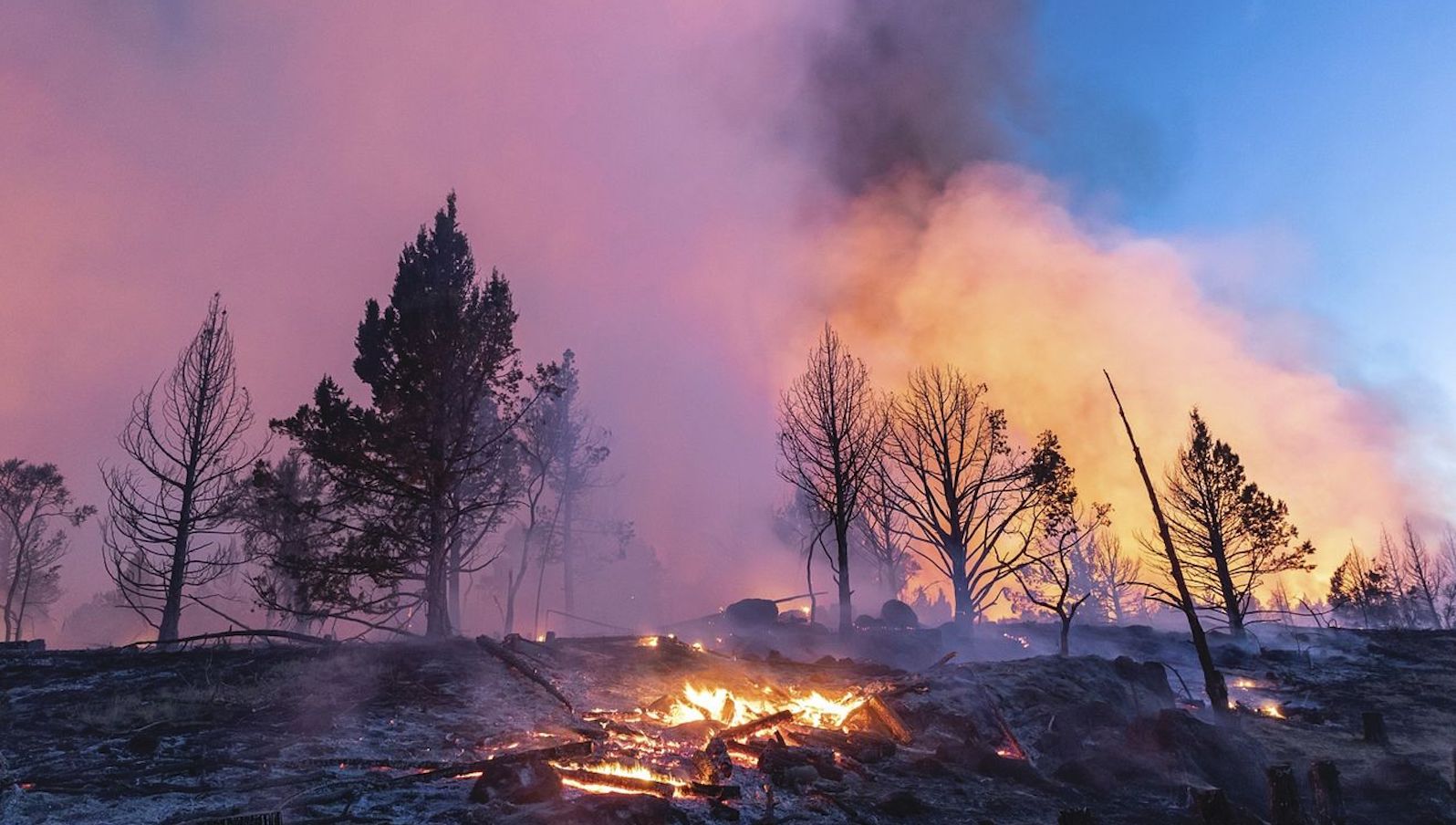As wildfires continue to escalate in number and intensity, businesses across the U.S. face unprecedented challenges in safeguarding their assets and ensuring business continuity. The urban encroachment into once-rural areas, combined with overgrown forests and changing landscapes, has made wildfire preparedness a year-round necessity. Exploring the key challenges businesses encounter as well as the practical steps they can take to protect themselves is vital, especially now during National Fire Prevention Week.
Understanding the Wildland Urban Interface (WUI)
The term "Wildland Urban Interface," or WUI, refers to areas where human development and natural landscapes intersect. These regions are particularly susceptible to wildfires due to their combination of urban and wildland characteristics. According to the National Association of State Foresters, more than 60,000 communities throughout the U.S. are at risk for WUI fires.
As our cities expand, they often sprawl into previously undeveloped, rural territories. This expansion places more communities in closer proximity to wildlands and forests.
Additionally, mature forests with an accumulation of undergrowth and deadwood have become significant risks. These areas are more prone to intense wildfires that spread rapidly and emit scorching heat.
Businesses must maintain awareness of the landscape and environmental conditions around their locations year-round. Regular assessments of the risk factors, such as dry vegetation, deadwood and proximity to forests, should be conducted.
Businesses may implement defensible space practices, including using fire-resistant building materials, maintaining fire-resistant landscaping, clearing deadwood and vegetation and creating controlled pathways. Businesses can seek guidance from organizations such as the National Fire Protection Association (NFPA), which assesses vulnerability and provides valuable recommendations.
See also: Here Come the Wildfires
Businesses must also collaborate. A prime example is the Falls Creek area in Durango, Colorado, where a community approach, combined with defensible space strategies, helped protect homes during the 416 Fire in 2018. The mitigation work done by residents, such as clearing brush and cutting dead trees, was noticed and appreciated by firefighters. This collaborative effort saved homes and demonstrated the power of community-based resilience.
Leveraging Innovative Approaches
In the quest to mitigate wildfire risks, businesses should also turn to innovative approaches and technologies. Organizations like the NFPA, the Insurance Institute for Business & Home Safety (IBHS) and the Federal Emergency Management Agency (FEMA) offer valuable resources and guidance.
Here are some innovative strategies and technologies that businesses can consider:
- Advanced Building Materials and Designs: Invest in fire-resistant building materials and designs that can withstand wildfire heat and embers. These innovations include fire-resistant roofing materials, ember-resistant vents and non-combustible siding. Embracing these construction techniques can significantly reduce the vulnerability of structures to wildfires.
- Ember-Resistant Landscaping: Implement landscaping practices that minimize the risk of embers igniting vegetation around your business. This includes using fire-resistant plants, creating defensible space and replacing flammable mulch with non-combustible alternatives such as gravel or stone.
- Firebreaks and Controlled Burns: Collaborate with local authorities and fire management agencies to create firebreaks and engage in controlled burns. These practices can help reduce the buildup of flammable vegetation and create fire-resistant zones around your business.
- Smart Sensors and IoT: Deploy smart sensors and Internet of Things (IoT) devices to monitor environmental conditions, such as temperature, humidity, wind speed and direction. These sensors can trigger automated responses, like activating exterior sprinkler systems or closing fire-resistant shutters, when fire-related conditions are detected.
- Community-Based Initiatives: Participate in community-based wildfire mitigation programs such as Firewise USA. These initiatives encourage collaboration among homeowners and businesses to create fire-resistant communities. They often provide resources, training and recognition for wildfire safety efforts.
- Regulatory Compliance: Stay informed about local building codes and regulations related to wildfire resilience. Ensure that your business complies with wildfire safety requirements and incorporates them into construction and renovation projects.
- Insurance Solutions: Work with insurers experienced in wildfire risk to tailor insurance solutions that cover the unique risks faced by your business. These solutions can include business interruption coverage, wildfire-specific endorsements and risk assessments.
Innovative approaches to wildfire mitigation should be tailored to the specific risks and challenges faced by your business and its location within wildfire-prone areas. By embracing these innovations, businesses can enhance their resilience and reduce the impact of wildfires on their operations and communities.
Balancing Cost-Effectiveness
Balancing wildfire preparedness with cost-effectiveness involves creating a comprehensive business continuity plan. This plan identifies key operations, personnel and potential shutdowns, enabling organizations to save money in the long run.
These plans should often include performing a cost-benefit analysis of different preparedness measures, outlining the critical operations, key personnel and assets that need protection during a wildfire event, prioritizing proactive measures over reactive ones, reviewing your insurance policies, investing in wildfire safety training for employees and exploring government grants and incentives for wildfire mitigation.
Remember that cost-effective wildfire preparedness is a continuing process that requires careful planning, regular assessments and a commitment to adapt to changing circumstances. By finding the right balance between cost and protection, businesses can mitigate wildfire risks without compromising their financial stability.
See also: A Breakthrough in Wildfire Safety
Insurance Considerations
Businesses operating in wildfire-prone areas should prioritize insurance considerations to ensure they are adequately protected. Key considerations include reviewing property insurance policies for coverage of wildfire-related damage, evaluating business interruption insurance to cover lost income and expenses during shutdowns and exploring wildfire-specific endorsements for enhanced protection. It's important to regularly update coverage limits, understand deductibles and maintain thorough records for claims purposes. Additionally, consider preventive measures for potential premium discounts and be aware of policy exclusions. Consult with insurance experts and incorporate insurance considerations into your business continuity planning.
In wildfire-prone regions, businesses should also assess post-wildfire risks such as flooding and evaluate the need for separate flood insurance. Periodic policy reviews and collaboration with experienced insurers can help align coverage with evolving business needs and risk profiles. By addressing these insurance considerations, businesses can better prepare for the financial impact of wildfires, ensuring a smoother recovery process and the protection of their assets and operations.
Closing Advice
Drawing from years of experience as a safety officer and former deputy fire chief, I encourage business owners and decision-makers to prioritize wildfire resilience. Wildfire prevention and protection can be summed up into five p’s: stay proactive, plan, practice, perform perpetual maintenance and partner with your local community.
Additionally, the FireWise community initiative, led by the NFPA, enhances community awareness and preparedness. It can help businesses stay informed, collaborate with neighbors and embrace wildfire safety as a continuing effort.
In the face of evolving wildfire challenges, together, we can build resilient communities that stand strong against the wildfire threat.






